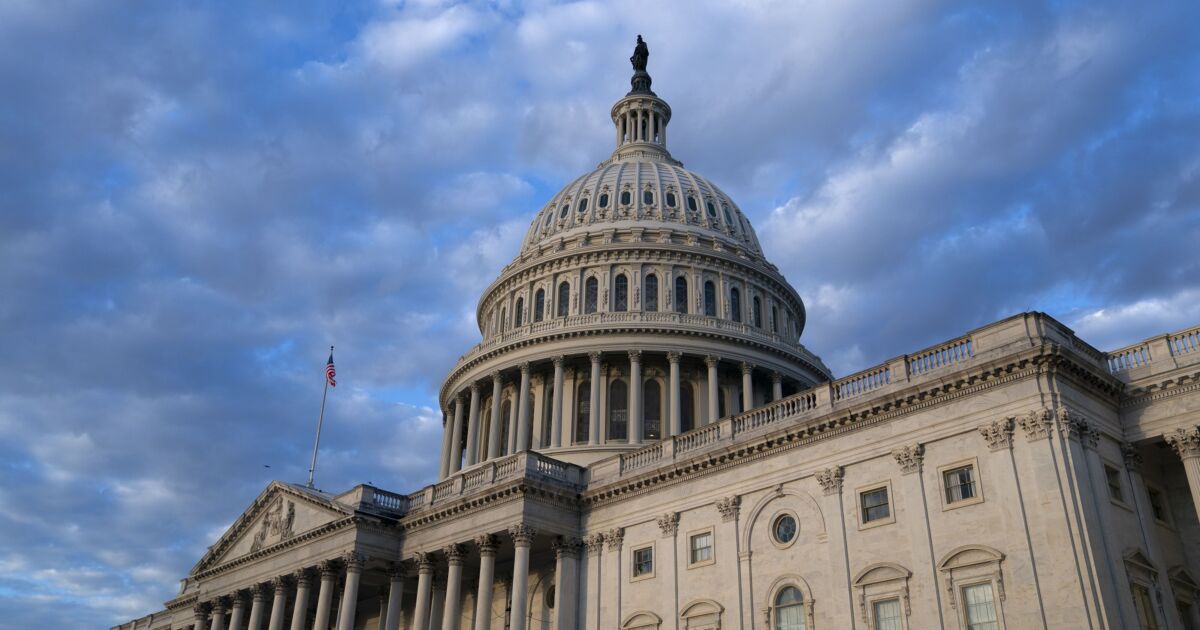House Republicans’ release of the tax provisions in their massive fiscal bill provides a crucial initial reading of what party leaders think could pass, culminating weeks of intense negotiations among fractious GOP lawmakers.
But the bill still may change as leaders strike more deals to secure passage in the House. And Senate Republicans are likely to follow their own path, requiring more compromises.
Business lobbyists notched many of the top tax breaks they were seeking, while avoiding levy increases that were instead targeted at renewable energy projects, immigrants, foundations and colleges. The bill is officially scored as losing $3.7 trillion in revenue, within the $4.5 trillion limit lawmakers set for themselves.
Here’s a rundown of the tax bill’s main provisions impacting individuals and businesses:
No millionaire tax
House Republicans rejected the so-called “millionaire tax” floated by President Donald Trump, which would have set a higher income tax rate for individuals making more than $2.5 million in a year.
The draft would permanently set the top tax rate for individuals at 37%, extending the rate set by President Donald Trump’s 2017 tax bill. Without new legislation, the top rate is set to expire and would revert back to 39.6%.
$30,000 SALT limit
The limit on state and local tax deductions would rise to $30,000 – a slight increase from the existing SALT cap, but likely not enough to appease Republicans from high-tax states like California and New York. The proposed SALT cap would be $30,000 for individual filers or married couples filing joint returns but $15,000 for married individuals filing separate returns.
The bill also would place a new income test on eligibility for the tax deduction, phasing it out for individuals earning more than $200,000, or married couples earning more than $400,000.
At least five Republican lawmakers rejected the new limit in advance as too low. They could stop the entire tax bill if they stick to their guns.
Business lobbyists meanwhile beat back an attempt to limit the ability of companies to claim a SALT deduction.
Tips, overtime and autos
Tips and overtime pay would be exempt from income tax through 2028, the end of Trump’s second term, fulfilling — at least for four years — a Trump campaign promise. The GOP bill would also make interest on auto loans deductible through 2028, addressing another Trump campaign promise. All three provisions would be retroactive to the beginning of this year.
Interest expensing
Private equity and other heavily indebted business sectors won a major fight in the tax bill on interest expensing. The bill adds depreciation and amortization when determining the tax deductibility of a company’s debt payments. The maximum amount any company can get in such tax write-offs is calculated as a percentage of earnings. That’s why using EBITDA – which is typically bigger than EBIT — in this process would generate heftier tax deductions.
Carried interest
The bill does not make any changes to the tax treatment of carried interest after a massive lobbying campaign by affected industries. Trump has pushed Republicans to tax carried interest as ordinary income, raising taxes on private equity, venture capitalists and real estate investors.
University endowment tax
Some private universities would face a dramatic tax increase on investment income generated by their endowments, posing a serious penalty to some of the nation’s wealthiest schools.
The provision would create a tiered system of taxation so that wealthy colleges and universities that meet a threshold based on the number of students would pay more. Under Trump’s 2017 tax law, some colleges with the most well-funded endowments currently pay a 1.4% tax on their net investment income. The levy would rise to as high as 21% on institutions with the largest endowments based on their student population.
The provision is a major escalation in Trump’s fight with Harvard and other elite colleges and universities, which he has sought to strong-arm into making curriculum and cultural changes that he favors. Harvard, Yale, Stanford, Princeton and MIT would face the maximum 21% tax rate, based on the size of their endowments in 2024, according to data from the NACUBO-Commonfund Study of Endowments.
Private foundation tax
Private foundations also would face an escalating tax based on their size: 2.78% for private foundations with assets between $50 million and $250 million, 5% for entities with assets between $250 million and $5 billion; and 10% for foundations with assets of at least $5 billion, such as the Gates Foundation, a longtime target for Republicans.
Sports teams
The bill would limit write-offs for professional football, basketball, baseball, hockey and soccer franchises that claim deductions connected to the team’s intangible assets, including copyright, patents or designs.
Electric vehicles
A popular consumer tax credit of up to $7,500 for the purchase of an electric vehicle would be fully eliminated by the end of 2026, and only manufacturers that have sold fewer than 200,000 electric vehicles by the end of this year would be eligible to receive it in 2026. Tax incentives for the purchase of commercial electric vehicles and used electric vehicles would also be repealed.
Renewable tax credits
Popular production and investment tax credits for clean electricity would be phased out by the end of 2031 and new requirements against using materials from certain foreign nations would be added. Those credits weren’t set to expire until the later part of 2032 or until carbon emissions from the U.S. electricity sector decline to at least 75% below 2022 levels. A tax credit for the production of nuclear energy would also be phased out by 2031.
Bonus for elderly
Americans aged 65 and older who don’t itemize their taxes would get a $4,000 bonus added to their standard deduction through 2028. That benefit would phase out for individuals making more than $75,000 and couples making more than $150,000. It would be retroactive to the beginning of this year.
Trump had campaigned on ending taxes on Social Security benefits, but that proposal would have run afoul of a special procedure Republicans are using to push through the tax law changes without any Democratic votes. The higher standard deduction is an alternative way of targeting a benefit to the elderly.
Targeting immigrants
Immigrant communities would face a new 5% tax on remittances sent to foreign nations. Many immigrants send a portion of their earnings abroad to support family members in their home countries. Tax credits would be available to reimburse U.S. citizens who send payments abroad.
Multinational corporations benefit
Multinational companies would get an extension of current lower rates on foreign profits, marking a win for corporate America.
Factory incentives
The bill does not include Trump’s call for a lower corporate tax rate for domestic producers, but instead allows 100% depreciation for any new “qualified production property,” like a factory, if construction begins during Trump’s term — beginning on Jan. 20, 2025, and before Jan. 1, 2029, and becomes operational before 2033. That would be a major incentive for new facilities as Trump wields tariffs to drive production to the U.S.
Child tax credit
The maximum child tax credit would rise from $2,000 to $2,500 through 2028 and then drop to $2,000 in subsequent years.
‘MAGA’ accounts
The bill would create new tax-exempt investment accounts to benefit children, dubbed “MAGA” accounts, referring to his Make America Great Again campaign slogan. The accounts would allow $5,000 in contributions per year and adult children would be able to use the funds for purchasing homes or starting small businesses, in addition to educational expenses. The bill would authorize one-time $1,000 government payments into accounts for children born from 2025 through 2028.
Pass-through deduction
Owners of pass-through businesses would be allowed to exclude 23% of their business income when calculating their taxes, a 3% increase from the current rate. The increase is a win for pass-through firms — partnerships, sole proprietorships and S corporations — which make up the vast majority of businesses in the U.S.
Research and development
The draft would temporarily reinstate a tax deduction for research and development, a top priority for manufacturers and the tech industry. The deduction will last through the end of 2029.


 Blog Post3 days ago
Blog Post3 days ago
 Economics1 week ago
Economics1 week ago
 Personal Finance7 days ago
Personal Finance7 days ago
 Accounting1 week ago
Accounting1 week ago
 Economics7 days ago
Economics7 days ago
 Economics1 week ago
Economics1 week ago
 Personal Finance1 week ago
Personal Finance1 week ago
 Economics5 days ago
Economics5 days ago










